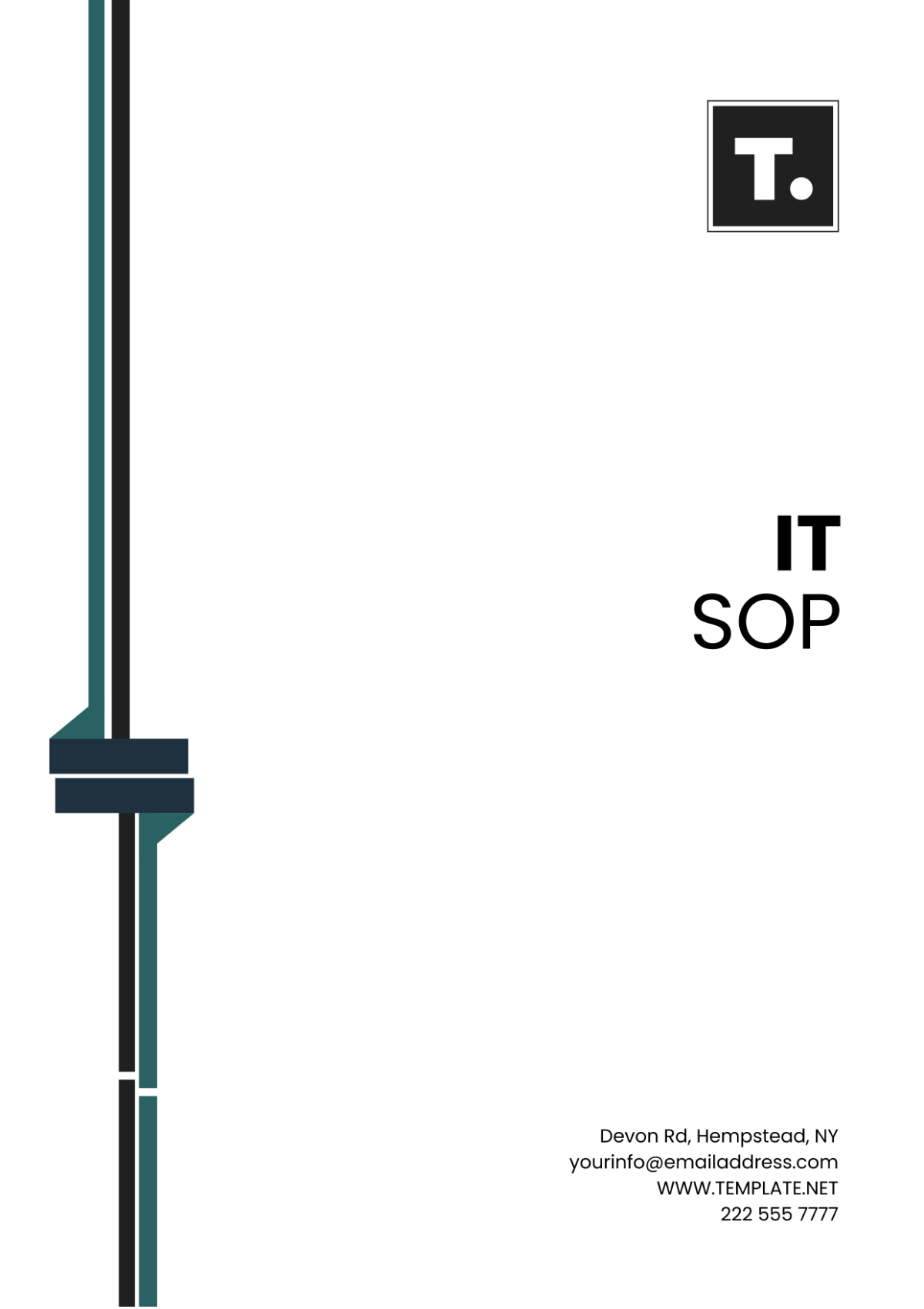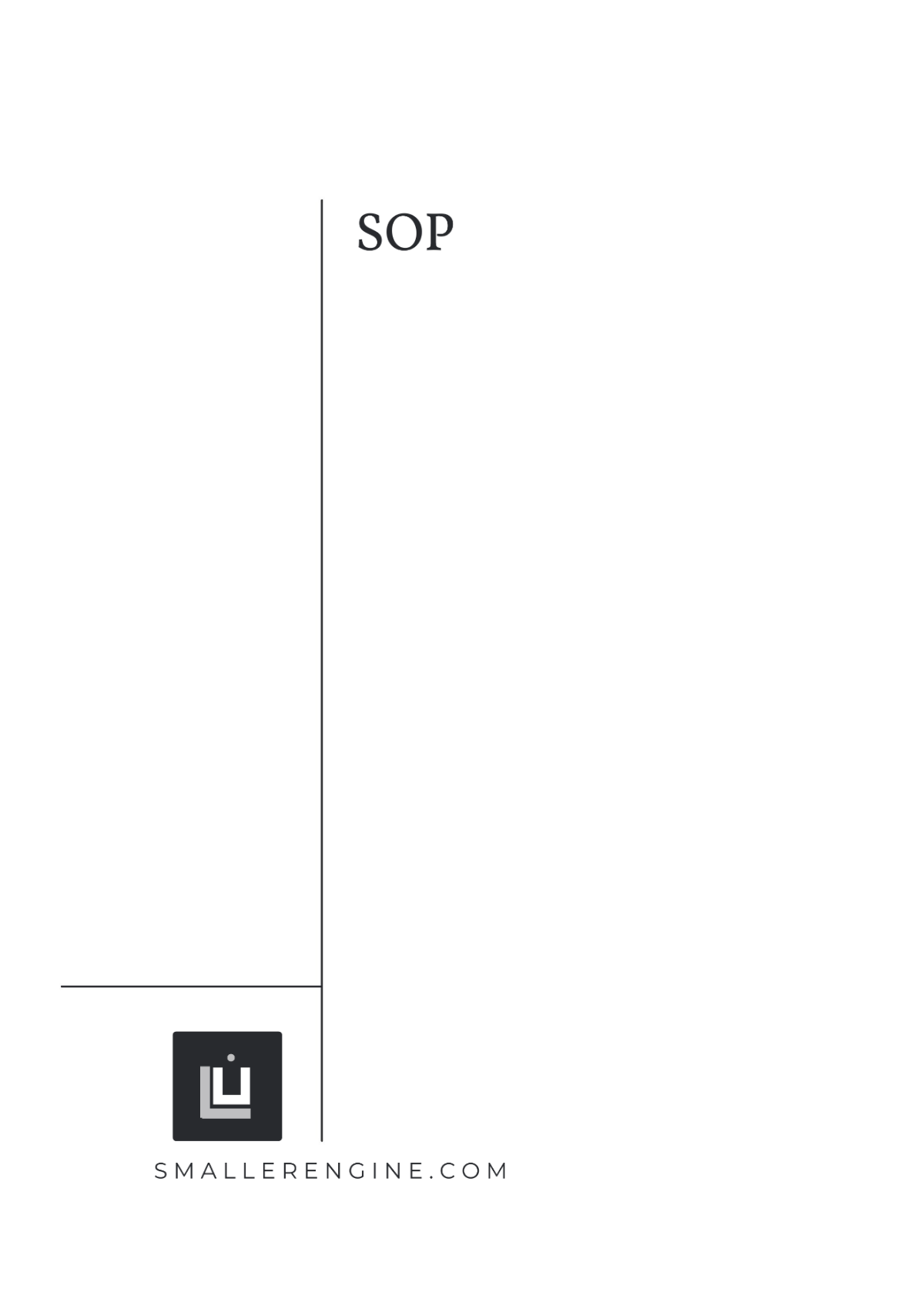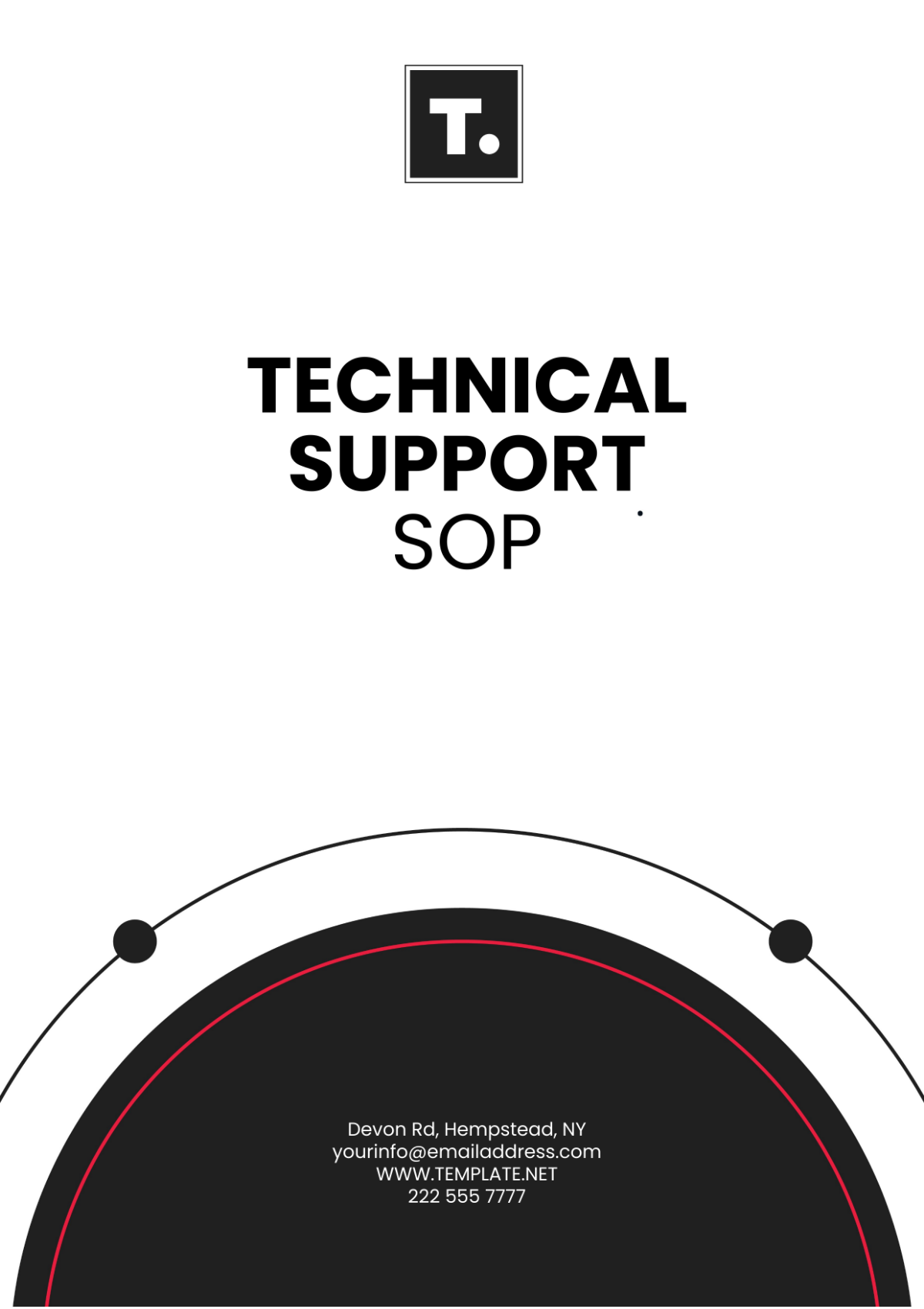Finance Accounts SOP
Introduction
The purpose of this Finance Accounts Standard Operating Procedure (SOP) is to establish a uniform and systematic approach to managing our financial accounts. This SOP covers a broad spectrum of financial activities, including account setup and closure, transaction handling, budgeting, financial reporting, audit and compliance, expenditure and revenue management, risk management, and the use of financial software. It is applicable across all departments within our organization that engage in financial activities or require financial data for operational purposes.
Importance and Objectives
The standardization of finance account procedures is crucial for ensuring consistency, accuracy, and efficiency in our financial operations. Key objectives include:
Enhancing Financial Control: By standardizing procedures, we aim to strengthen our control over financial transactions and account management, reducing the risk of errors and inconsistencies.
Ensuring Compliance: Standardized procedures help ensure that all financial activities are compliant with relevant laws, regulations, and internal policies.
Facilitating Training and Onboarding: A clear and consistent SOP makes it easier to train new staff and ensures that everyone follows the same procedures.
Improving Efficiency: Standardization streamlines processes, reducing the time and resources needed to manage financial tasks.
Supporting Decision Making: Reliable and standardized financial data provide a solid basis for strategic decision-making.
Definitions
Financial Account: An entity for recording and summarizing financial transactions.
Transaction: Any financial event that impacts the financial statements, such as payments, receipts, accruals.
Budget: A financial plan that estimates income and expenditure for a specific period.
Audit: An official inspection of an organization's accounts by an independent body.
Compliance: Adherence to laws, regulations, and internal policies.
Roles and Responsibilities
In this section, we clearly define the roles and responsibilities associated with financial management within our organization. This clarity is essential for ensuring accountability and effective execution of financial tasks.
Roles | Responsibilities |
Chief Financial Officer (CFO) | Oversees all financial operations. Develops financial strategy. Ensures compliance with financial regulations |
Financial Accountant | Manages and maintains financial records. Prepares financial statements. Conducts account reconciliations |
Budget Analyst | Develops and monitors organizational budgets. Analyzes budget variances. Provides budget forecasts |
Revenue Manager | Oversees income generation processes. Manages billing and receivables. Analyzes revenue trends |
Expenditure Officer | Administers accounts payable. Ensures efficient handling of expenses. Reviews and approves expenditures |
Compliance Officer | Monitors adherence to financial laws and standards. Coordinates audits. Advises on regulatory compliance |
Risk Manager | Identifies and assesses financial risks. Develops risk mitigation strategies. Monitors risk management plans |
Financial Analyst | Conducts financial analysis and reporting. Provides insights on financial health. Supports decision-making |
IT Systems Manager | Manages financial software and systems. Ensures data security and integrity. Supports technology upgrades |
Account Setup and Closure Procedures
This section delineates the systematic steps for setting up new financial accounts and the guidelines for closing them. Adhering to these procedures ensures the organized establishment and discontinuation of accounts, aligning with our financial management strategy.
A. Steps for Setting Up New Financial Accounts
Identify the requirement for a new account, specifying its purpose and necessity.
Obtain approval from the Chief Financial Officer (CFO) for the new account setup.
Complete all necessary forms and documents.
Classify the account appropriately based on its intended use.
If applicable, coordinate with the bank to set up the account.
Register the new account in our internal financial systems.
Assign necessary resources and personnel to manage the account.
Inform all relevant departments about the new account and its functionalities.
B. Guidelines for Closing Accounts
Conduct a thorough review to justify the closure of the account.
Obtain approval from the CFO or relevant authority for account closure.
Ensure all balances are settled, and outstanding transactions are completed.
Complete necessary documentation formalizing the account closure.
Reflect the account closure in our internal financial systems and records.
Inform all stakeholders, including departments and external entities.
Securely archive all relevant account records for future reference.
Transaction Handling
This section outlines the specific procedures for processing various financial transactions. This ensures accuracy, consistency, and security in the management of payments, receipts, cash transactions, and bank deposits.
A. Procedures for Processing Financial Transactions
Payments
Confirm that each invoice received is accurate and matches the service/product.
Obtain the necessary approvals based on the payment amount and guidelines.
Schedule payments in accordance with the terms of the invoice and our cash flow management plan.
Record the payment in our financial system.
Execute the payment using the approved method (e.g., electronic transfer, check).
Confirm receipt of payment by the vendor and reconcile the payment with our bank statements.
Receipts
Issue accurate invoices for goods sold or services rendered.
Monitor outstanding receivables and follow up as needed.
Record incoming payments promptly in our financial system.
Reconcile the receipts with customer invoices and update the account status.
Send acknowledgments or receipts to customers upon receiving payments.
B. Guidelines for Handling Cash Transactions and Bank Deposits
Ensure that cash is handled securely, limiting access to authorized personnel only.
Record all cash transactions immediately with details of the date, amount, and purpose.
Regularly count and verify cash on hand against financial records.
Deposit cash into the bank account on the same day of receipt.
Maintain records of bank deposit slips along with the transaction details.
Reconcile cash transactions and bank deposits with bank statements.
Minimize cash transactions where possible to reduce risk.
Budgeting and Forecasting
This section is dedicated to outlining the processes for creating, managing, and updating our financial budgets. Additionally, this section delineates the procedures for conducting financial forecasting and analysis, which are crucial for strategic planning and financial management.
A. Process for Creating and Updating Budgets
Compile past financial data to understand spending patterns and revenue trends.
Solicit budget requirements and forecasts from each department, ensuring alignment with their operational goals.
Combine inputs to create an initial draft of the budget, covering all revenue and expenditure projections.
Conduct a thorough review of the draft budget, making adjustments as necessary to align with strategic objectives.
Submit the draft budget for approval from senior management or the board of directors.
Distribute the approved budget to all departments and relevant stakeholders.
Regularly monitor actual performance against the budget, identifying variances.
Conduct a mid-year budget review to assess performance and make any necessary adjustments.
At the end of the fiscal year, analyze performance against the budget to inform the next year’s budgeting process.
B. Procedures for Financial Forecasting and Analysis
Evaluate external economic and industry factors that could impact financial performance.
Project future revenues based on historical data, market analysis, and trends.
Estimate future expenses, considering both fixed and variable costs.
Develop cash flow forecasts to anticipate future financial liquidity.
Create different financial scenarios to prepare for various potential futures.
Perform sensitivity analysis to understand the impact of various financial changes.
Update financial forecasts regularly to reflect new information.
Provide regular financial forecasting reports to stakeholders.
Financial Reporting
In this section, we establish the guidelines for preparing and submitting financial reports, ensuring they are accurate, timely, and compliant with regulatory standards. This section also specifies the frequency and preferred formats of these reports, which are critical for internal and external communication of our financial status.
A. Guidelines for Preparing and Submitting Financial Reports
Ensure all financial reports are accurate and reflect the true financial position of our organization.
Compile and prepare financial reports according to the set schedule to ensure timely submission.
Follow generally accepted accounting principles (GAAP) and any other relevant financial reporting standards.
Include all necessary documentation and detailed notes to support financial statements.
Conduct internal reviews of financial reports for accuracy and completeness before submission.
Obtain approval from senior management, such as the CFO or CEO, on all financial reports.
Treat all financial reports as confidential, ensuring secure storage and handling.
Ensure all reports comply with legal and regulatory requirements.
B. Frequency and Formats of Reports
Report Type | Frequency | Format | Description |
Income Statement | Quarterly, Annually | Digital (PDF, Excel), Hard Copy | Details revenue, expenses, |
Balance Sheet | Quarterly, Annually | Digital (PDF, Excel), Hard Copy | Shows assets, liabilities, and equity. |
Cash Flow Statement | Quarterly, Annually | Digital (PDF, Excel), Hard Copy | Illustrates cash inflows |
Audit Compliance
This section is essential for ensuring that our financial practices are in line with regulatory standards and organizational policies. It outlines the procedures for conducting both internal and external audits, and details our compliance requirements with various financial regulations.
A. Procedures for Internal and External Audits
Develop a comprehensive audit plan that includes objectives, scope, and timeline.
Choose qualified and impartial auditors for external audits; internal audits may be conducted by an internal audit team.
Compile and organize all necessary financial documents and records for review.
Carry out the audit in accordance with the predefined plan and auditing standards.
Identify any issues or discrepancies during the audit process.
Prepare a detailed audit report.
Present the audit report to management for review and discussion.
Develop and implement an action plan to address audit findings and improve financial processes.
Conduct follow-up audits as necessary to ensure corrective actions have been implemented effectively.
B. Compliance Requirements with Financial Regulations
Sarbanes-Oxley Act (SOX): Implement stringent internal controls over financial reporting. Ensure accurate and timely financial disclosures. Conduct annual audits to assess compliance with SOX.
Generally Accepted Accounting Principles (GAAP): Adhere to GAAP standards in financial reporting. Ensure consistency in accounting methods and practices.
Internal Revenue Service (IRS) Regulations: Comply with all tax laws and filing requirements. Accurately report all income and deductions. Maintain detailed records for tax purposes.
Dodd-Frank Wall Street Reform and Consumer Protection Act: Maintain transparent financial practices. Implement risk management procedures. Comply with consumer protection rules.
Fair Credit Reporting Act (FCRA): Ensure accuracy of credit and financial information. Comply with consumer rights regarding credit information.
Expenditure and Revenue Management
In this section, we focus on the effective management of both expenditures and revenues, which are crucial for maintaining our financial health and sustainability. Clear guidelines and procedures are provided to ensure meticulous tracking, appropriate allocation, and accurate recording of all financial transactions.
A. for Managing Expenses and Income
Clearly categorize all expenses and income streams for better tracking.
Ensure that all expenditures are in line with the allocated budget and income forecasts are updated based on actual performance.
Conduct cost-benefit analyses for major expenditures to ensure optimal utilization of resources.
Periodically review both expense and income records to identify trends, anomalies, and areas for improvement.
Maintain comprehensive and organized documentation for all financial transactions.
Implement checks and balances to prevent fraud or misuse of funds in both expense disbursements and income receipts.
Ensure all expenses and income comply with relevant laws, accounting standards, and internal policies.
B. Procedures for Expense Approvals and Revenue Recording
Expense Approval Process
Submission of expense requests with supporting documentation.
Review of expense requests by designated department heads or managers.
Approval or rejection of requests based on budget alignment and resource availability.
Recording and tracking of approved expenses in the financial system.
Revenue Recording Process
Timely recording of all income and revenue streams in the financial system.
Verification of revenue sources and amounts for accuracy.
Reconciliation of recorded revenues with bank deposits and statements.
Regular updating of revenue forecasts based on actual income received.
Technology and Software Use
In this section, we emphasize the importance of leveraging technology to enhance the efficiency and accuracy of our financial operations. The guidelines and protocols outlined here ensure the effective and secure use of financial management software and tools.
A. Using Financial Management Software and Tools
Choose software that best fits our financial management needs and integrates seamlessly with other systems.
Ensure that all financial software is regularly updated and maintained for optimal performance.
Implement strict access controls to financial software, allowing only authorized personnel to use the systems.
Regularly back up financial data to prevent loss in case of system failures or other incidents.
Provide comprehensive training to all users of financial software to ensure correct and efficient usage.
Ensure proper integration of financial software with other business systems for cohesive data management.
B. Data Security and Confidentiality
Use strong authentication methods, like two-factor authentication, to enhance security.
Conduct regular security audits of financial systems to identify and rectify vulnerabilities.
Encrypt sensitive financial data both in transit and at rest.
Require staff with access to sensitive financial data to sign confidentiality agreements.
Develop and implement an incident response plan for potential security breaches.
Ensure compliance with relevant data protection laws and regulations.
Training and Development
This section is dedicated to fostering continuous learning and skill enhancement in finance accounts management. Through structured training programs, we aim to keep our team updated with best practices, new regulations, and technological advancements.
Training Module | Description | Frequency | Duration |
Basic Financial Accounting | Covers fundamentals of accounting principles | Annual | 2 Days |
Advanced Financial Management | In-depth training on financial analysis and management | Biennial | 3 Days |
Software and Technology Training | Hands-on training on financial software and tools | As Needed | 1 Day |
Regulatory Compliance | Updates on current financial laws and regulations | Annual | 2 Days |
Risk Management Strategies | Training on identifying and managing financial risks | Biennial | 2 Days |
Ethical Financial Practices | Ethics and integrity in financial management | Annual | 1 Day |
Data Security and Confidentiality | Ensuring the security of financial information | Annual | 1 Day |
Amendment and Revision Provisions
In this section, we outline the process for updating and modifying this SOP to ensure it remains relevant and effective.
Schedule regular reviews of the SOP, at least annually, to assess its effectiveness and relevance.
Encourage team members to propose amendments based on observed challenges or changes in financial management practices.
Establish a committee to review proposed amendments, which will then be forwarded to senior management for approval.
Document all changes, including the rationale and expected impact, for transparency and future reference.
Communicate any amendments to all relevant personnel to ensure awareness and compliance.
Provide training, if necessary, on the new procedures or changes introduced in the protocol.
Monitor the implementation of amendments and gather feedback for future improvements.

















































